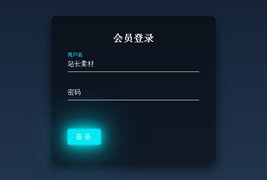Angular学习之聊聊Http ( 错误处理 / 请求拦截 )
3935
本篇文章带大家继续angular的学习,简单了解一下Angular中的Http处理,介绍一下错误处理和请求拦截,希望对大家有所帮助!

基本使用
用 Angular 提供的 HttpClient 可以很轻松的实现 API 接口的访问。
举个例子 新建一个 http.service.ts 可以在 environment 中配置不同环境的 host 地址
再贴一下 proxy.config.json 第一章中有介绍到
{
"/api": {
"target": "http://124.223.71.181",
"secure": true,
"logLevel": "debug",
"changeOrigin": true,
"headers": {
"Origin": "http://124.223.71.181"
}
}
}import { HttpClient } from '@angular/common/http';
import { Injectable } from '@angular/core';
import { environment } from '@env';
@Injectable({ providedIn: 'root' })
export class HttpService {
constructor(private http: HttpClient) {}
public echoCode(method: 'get' | 'post' | 'delete' | 'put' | 'patch' = 'get', params: { code: number }) {
switch (method) {
case 'get':
case 'delete':
return this.http[method](`${environment.backend}/echo-code`, { params });
case 'patch':
case 'put':
case 'post':
return this.http[method](`${environment.backend}/echo-code`, params);
}
}
}然后在业务中 我们就可以这样使用
import { Component, OnInit } from '@angular/core';
import { HttpService } from './http.service';
@Component({
selector: 'http',
standalone: true,
templateUrl: './http.component.html',
})
export class HttpComponent implements OnInit {
constructor(private http: HttpService) {}
ngOnInit(): void {
this.http.echoCode('get', { code: 200 }).subscribe(console.log);
this.http.echoCode('post', { code: 200 }).subscribe(console.log);
this.http.echoCode('delete', { code: 301 }).subscribe(console.log);
this.http.echoCode('put', { code: 403 }).subscribe(console.log);
this.http.echoCode('patch', { code: 500 }).subscribe(console.log);
}
}这看起来非常简单 类似 Axios
下面介绍一下一些常用的用法
错误处理
this.http
.echoCode('get', { code: 200 })
.pipe(catchError((err: HttpErrorResponse) => of(err)))
.subscribe((x) => {
if (x instanceof HttpErrorResponse) {
// do something
} else {
// do something
}
});请求拦截
请求拦截是比较常用的
例如 你可以在这里判断 cookie 是否有效 / 全局错误处理 ...
新建 http-interceptor.ts 文件 ( 文件名可以随意 )
最主要的是要实现 HttpInterceptor 的 intercept 方法
import { HttpInterceptor, HttpRequest, HttpHandler, HttpResponse, HttpErrorResponse } from '@angular/common/http';
import { Injectable } from '@angular/core';
import { Observable, of, throwError } from 'rxjs';
import { filter, catchError } from 'rxjs/operators';
import { HttpEvent } from '@angular/common/http';
@Injectable()
export class HttpInterceptorService implements HttpInterceptor {
constructor() {}
intercept(req: HttpRequest<any>, next: HttpHandler): Observable<HttpEvent<any>> {
return next
.handle(req)
.pipe(filter((event) => event instanceof HttpResponse))
.pipe(
catchError((error) => {
console.log('catch error', error);
return of(error);
})
);
}
}然后在 module 中的 providers 中使用 这个拦截器就生效了
@NgModule({
imports: [RouterModule.forChild(routes)],
exports: [RouterModule],
providers: [
{
provide: HTTP_INTERCEPTORS,
useClass: HttpInterceptorService,
multi: true,
},
],
})
export class XXXModule {}本文网址:https://www.zztuku.com/index.php/detail-13599.html
站长图库 - Angular学习之聊聊Http ( 错误处理 / 请求拦截 )
申明:本文转载于《掘金社区》,如有侵犯,请 联系我们 删除。








您还没有登录,请 登录 后发表评论!
提示:请勿发布广告垃圾评论,否则封号处理!!